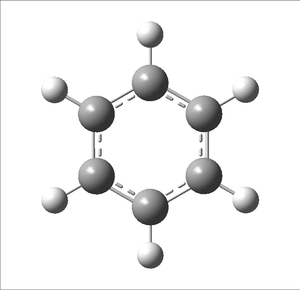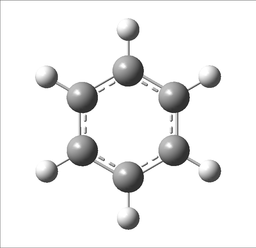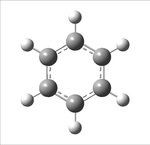Newpage
Section Title (Learning how to make a wiki)
Subtitle
Sub-subtitle
bold italic underline bold & italic x1 x1
Subtitle


test molecule |
The optimisation file is liked to here
The quick brown fox jumps over the lazy dog.[1]- ↑ This is the lazy dog reference.
| heading | heading |
|---|---|
| cell | cell |
| cell | cell |
| Cell 1 | Cell 2 | Cell 3 |
| Cell A | Cell B | Cell C |
| Information | ||
|---|---|---|

| ||
| More Info | ||
| Column 1 | Column 2 | Column 3 |
| A | B | |
| C | D | |
| E | ||
| F | ||
| G | ||
Ammonia, NH3
test molecule |
Properties
NH3 optimised bond length= 1.01798 Angstroms
NH3 optimised bond angle=105.741 degrees
Calculation type=FREQ
Calculation method=RB3LYP
Point group=C3v
E(RB3LYP)= -56.55776873au
Basis set= 6-31G (d.p)
Item Value Threshold Converged? Maximum Force 0.000004 0.000450 YES RMS Force 0.000004 0.000300 YES Maximum Displacement 0.000070 0.001800 YES RMS Displacement 0.000033 0.001200 YES RMS Displacement 0.000824 0.001200 YES
The optimisation file is linked to SAMUELJONES NH3 OPT COMPPHYS.log
Vibrations
Vibrational modes
Using the 3N-6 rule, I would expect ammonia to have 6 modes ((3x4)-6), which it does. Modes 2 and 3 and modes 5 and 6 are degenerate, as they have the same frequency of vibration.
Mode 4 is highly symmetric, as it is a symmetric stretch of all 3 N-H bonds. The umbrella mode is probably mode 1, as the molecule looks like it turns inside-out, like an umbrella in the wind. I would expect to see 4 bands in an IR spectrum of NH3(g), as 2 pairs of vibrational modes are degenerate.Charges and charge distribution
On the N atom, there is a charge of -1.125 and on each H, there is a charge of 0.375. I would have expected a charge of zero on both if the bond was truly covalent, but I know that N has a higher electronegativity than H, so it will draw electron density towards itself.
N2
Information
Bond length= 1.10550 Angstroms
Item Value Threshold Converged? Maximum Force 0.000001 0.000450 YES RMS Force 0.000001 0.000300 YES Maximum Displacement 0.000000 0.001800 YES RMS Displacement 0.000000 0.001200 YES
Point group=D∞h
| Mode | Type of vibration |
|---|---|
| 1 | Symmetric bend |
| 2 | Asymmetric bend |
| 3 | Asymmetric bend |
| 4 | Symmetric stretch |
| 5 | Asymmetric stretch |
| 6 | Asymmetric stretch |
H2
Bond length= 0.74279 Angstroms
Point group=D∞h
| Mode | Type of vibration | Frequency/Hz |
|---|---|---|
| 1 | Symmetric stretch | 2457.33 |
The Haber Process
N2(g)+3H2(g)--->2NH3(g)
Energy of reaction/au
E(NH3(g))=
2E(NH3(g))=
E(N2(g))=
E(H2(g))=
3E(H3(g))=
ΔE=2E(NH3(g))-[E(N2(g))-3E(H2(g))]=
Energy of reaction/kJmol-1
E(NH3(g))=
2E(NH3(g))=
E(N2(g))=
E(H2(g))=
3E(H3(g))=
ΔE=2E(NH3(g))-[E(N2(g))-3E(H2(g))]=
The products are more stable, as the enthalpy change of the reaction is negative, which means that the bonds formed are stronger than those broken to form them.
Molecular orbital diagrams
Molecule of my choice
CO2(g)
Information
Linear Point group=D∞h Optimisation
Vibrational modes
Based on the 3N-5 rule, I expected there to be 4 vibrational modes ((3x3)-5), which there were.
Energy change of formation
C(s)(graphite)+O2(g)--->CO2(g)
E(C(s))(graphite))=
E(O2(g))=
E(CO2(g))=
ΔE=E(CO2(g))-(E(O2(g))+E(C(s))(graphite)))
Extra molecule
Information
| Mode | Type of vibration | Frequency/Hz |
|---|---|---|
| 1 | Symmetric stretch | 4465.68 |


